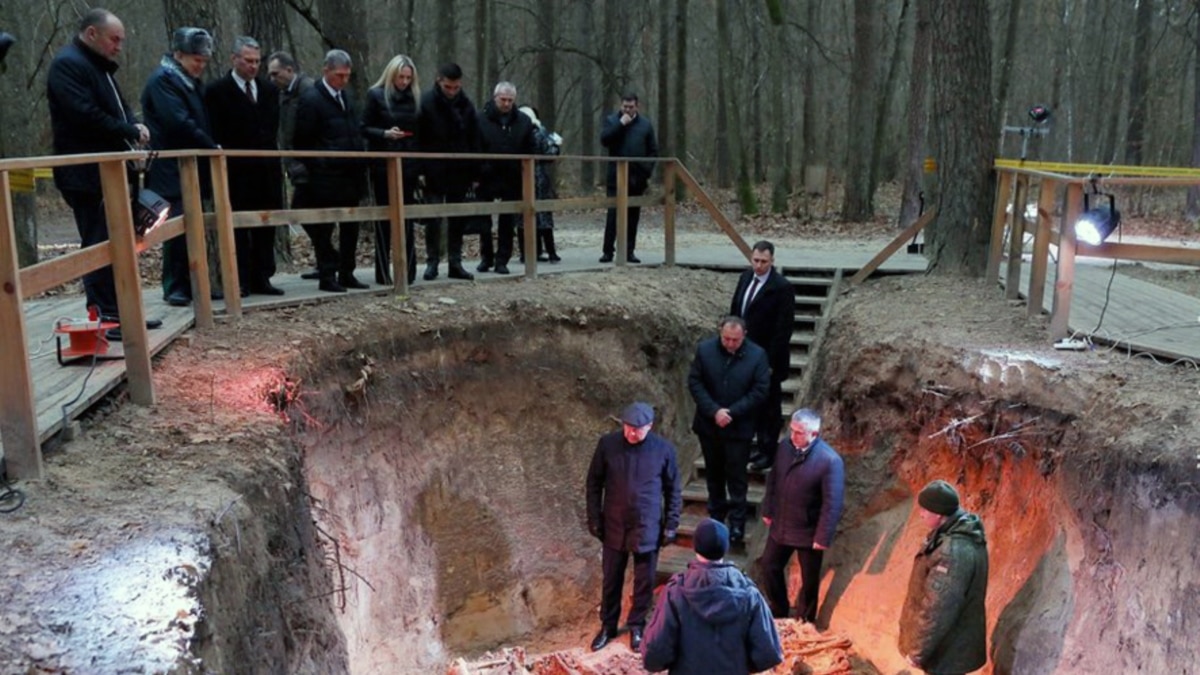Excavations at this site resumed in April 2022.
According to the prosecutor's office, "new indisputable facts about the genocide of the civilian population on the territory of the BSSR" were discovered.
The prosecutor's office claims that "fascist executioners carried out mass massacres of civilians" in Chankovskiy forest.
Roman Golovchenko proposed to consider the issue of conserving one of the execution pits with the remains as a place of living memory of the fascist occupation.
"A visit to such an object by representatives of labor, educational and other collectives will clearly show how the invaders systematically destroyed peaceful people."
- the website of the Prosecutor General's Office quotes the words of Golovchenko.
However, in the summer of this year, the Gomel Department of Municipal Construction published a report on the assessment of the impact on the environment of the construction of a bypass road around Gomel.
"Ecodom" organization noticed that in this report, not only the places of mass burials of soldiers who defended Gomel in 1941, but also two mass graves of victims of Stalin's repressions of 1937 were marked.
A few days later, the authorities explained that the reference to the burials of victims of Stalin's repressions was erroneous.
But as "Nasha Niva" reported, a letter from the BelNDI of Urban Development was also attached to the report (it is dated January 20, 2022), which states that in the territory south of Novabelica "there may be many uncounted burials of the first half of the 20th century - victims of political repressions of the 1930s and the military units of the Red Army, which were destroyed on August 19-22, 1941, which defended Gomel from the German-fascist invaders."
Excavations in this place took place as early as 1995, with the involvement of historians and archaeologists.
The conclusions were different then, and the authorities confirmed that people shot by the NKVD in October-November 1937 were buried there.
Archaeologists from the regional museum of local history and State University named after
F. Skaryny.
In 1997, in the scientific collection dedicated to the repressions, the senior researcher of the Museum of Local History, Aleksandar Shtymenko, explained in detail the findings during the excavations and drew the line: "The executions were carried out in the short period of October-November 1937."
Shell casings were found in the grave.
Among the finds are shoes, dominated by the remains of spruce boots.
Shoes of factory production, with the brand of 1937.
Soviet coins issued in 1930-1936 were also in the grave.
Roman Golovchenko at the excavation site
Archaeologists found a comb case with inscriptions scratched with a sharp object.
"As a result of deciphering, it turned out that the owner of this case was arrested on Tuesday, August 19, 1937 and was under investigation until Thursday, October 7, 1937.
Judging by the inscription, on August 29, the man was charged with treason to the Motherland, preparation of an armed uprising, carrying out terrorist acts, propaganda and agitation against the Soviet government.
In April, the official newspaper "Gomelskaya Pravda" denied that victims of the NKVD were buried at the mentioned place.
Despite the information in open sources about the excavations in 1995, the publication claimed that it is not known exactly who organized them.
Not far from the excavation site, there is still a Catholic cross, on the sign of which is written about the victims of Bolshevik repressions.
Catholics pray near it with the permission of the local authorities.
For sensitive topics,
write to us here.
SAFE
